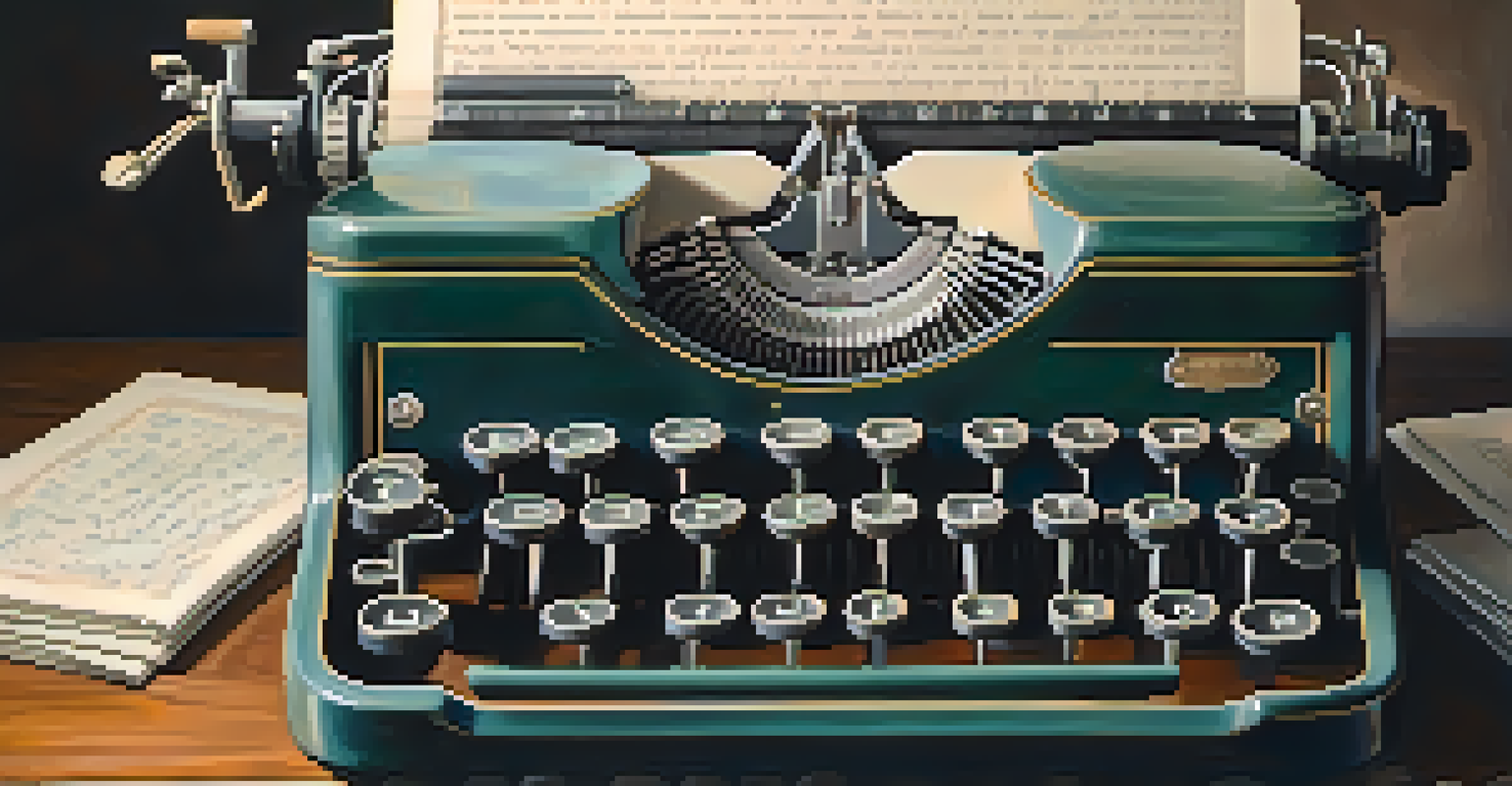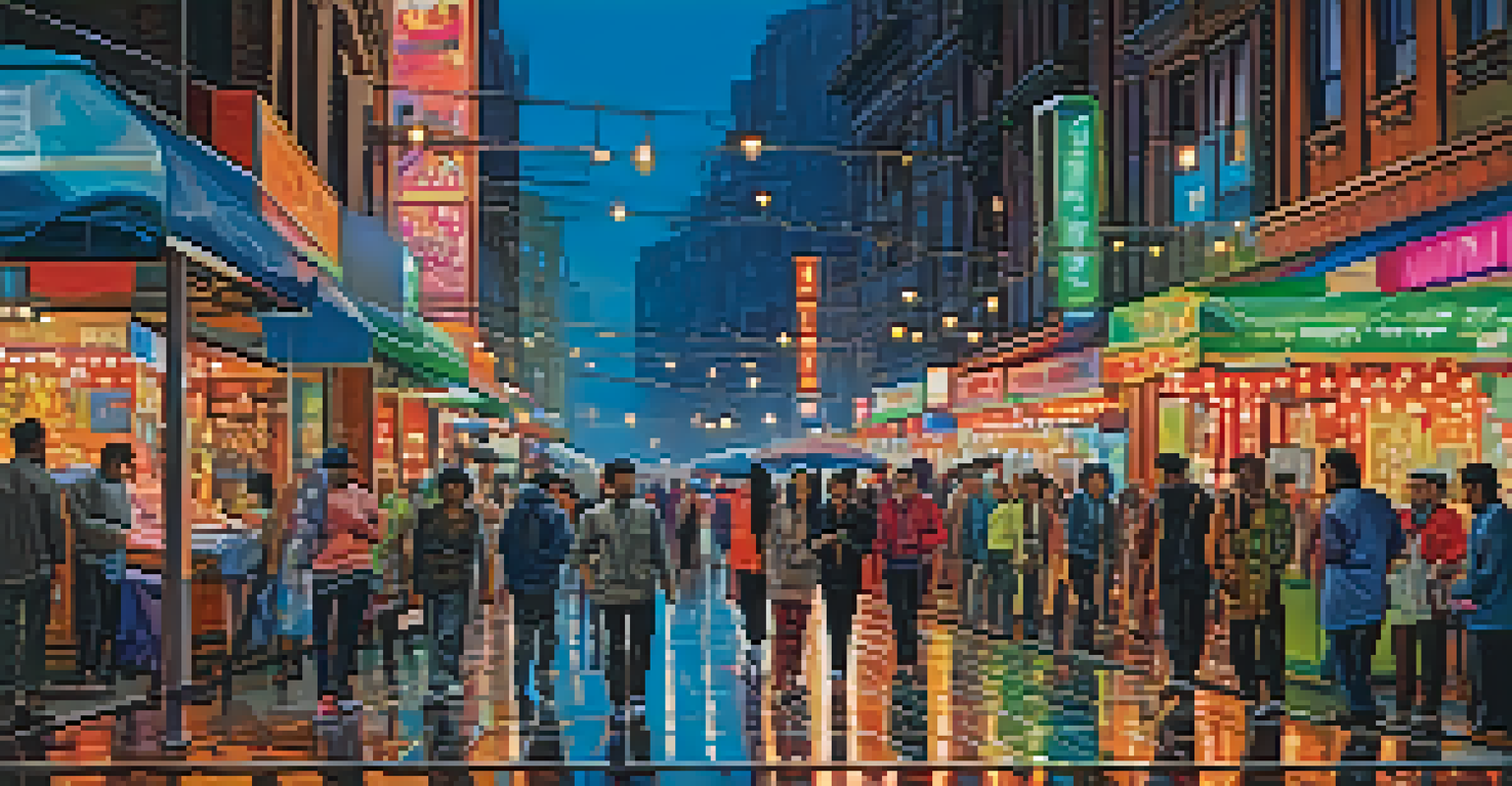The Importance of Rhythm in Film Scores and Audience Engagement

Understanding Rhythm: The Heartbeat of Film Scores
Rhythm is often described as the heartbeat of music, and in film scores, it's no different. It sets the pace and mood, guiding the audience's emotional responses throughout a movie. Just like a heartbeat can quicken in moments of excitement or slow during reflective scenes, rhythm in film can create tension or release.
Music is the shorthand of emotion.
Consider a suspenseful thriller; the rapid, staccato rhythms can elevate the feeling of anxiety, making viewers sit on the edge of their seats. On the contrary, a slow, flowing rhythm in a romantic scene can evoke feelings of tenderness and intimacy. It’s this dynamic interplay of rhythms that keeps audiences engaged and invested in the story.
Ultimately, understanding how rhythm functions in film scores allows filmmakers to craft a more immersive experience. When viewers feel the music in their bones, it enhances their overall connection to the narrative, making it a crucial element in storytelling.
The Psychological Impact of Rhythm on Viewers
Rhythm doesn't just influence emotions; it also affects our psychological state. Studies show that certain rhythms can induce feelings of happiness, fear, or sadness, making rhythm a powerful tool for filmmakers. For instance, a quick tempo can inject energy into action scenes, while a slow tempo might encourage contemplation during dramatic moments.

Imagine a scene where a character faces a life-changing decision. A gradual build-up in rhythm can mirror their internal struggle, pulling the audience into their emotional journey. This psychological connection is reinforced through the use of rhythm, prompting viewers to empathize with the character on-screen.
Rhythm Shapes Emotional Experience
Rhythm in film scores acts as a powerful tool to evoke emotions, guiding audience reactions and enhancing storytelling.
By strategically employing different rhythms, filmmakers can manipulate audience reactions and create a more profound impact. This creates an engaging experience that lingers long after the credits roll, highlighting the importance of rhythm in film scores.
Rhythm and Storytelling: A Dance of Emotions
Film is a visual medium, but its emotional core often lies in its score. Rhythm plays a critical role in storytelling, acting as a bridge between music and narrative. Each scene has its own rhythm, and when aligned with the story's pacing, it enhances the overall experience.
Rhythm is the heartbeat of music, and it guides the emotional responses of the audience.
Think about an epic battle scene, where the rapid beats can mimic the chaos and urgency of combat. Conversely, a soft, lullaby-like rhythm during a scene of reflection can encourage the audience to absorb the gravity of the moment. This synchronization of rhythm and narrative creates a cohesive storytelling experience.
When rhythm complements the story, it invites viewers to engage more deeply with the film. It’s like a dance, where the music and the visuals move in harmony, leaving audiences spellbound and connected to the unfolding drama.
Cultural Influences on Rhythm in Film Scores
Rhythm in film scores is often influenced by cultural contexts, which adds another layer of depth to the storytelling. Different cultures have unique rhythmic patterns that resonate with their histories and traditions. For example, a film set in Japan may incorporate traditional Japanese rhythms that evoke specific emotions tied to that culture.
This cultural dimension can enhance the authenticity of a film, making it more relatable to audiences familiar with those rhythms. It also introduces viewers to new perspectives, enriching their experience and understanding of the storyline. As the score reflects cultural nuances, it helps bridge the gap between the viewer and the film's setting.
Cultural Context Enriches Scores
Incorporating cultural rhythms adds depth and authenticity to film scores, allowing viewers to connect more deeply with the narrative.
Moreover, the fusion of various cultural rhythms can create a dynamic soundscape, appealing to diverse audiences. This not only engages viewers but also fosters appreciation for different cultural expressions through the universal language of music.
The Role of Rhythm in Creating Tension and Release
One of rhythm's most powerful applications in film scoring is its ability to create tension and release. By manipulating tempo and dynamics, composers can craft moments that keep viewers on the edge of their seats. For instance, a gradual increase in tempo can build suspense, while a sudden drop can provide relief, allowing audiences to breathe.
This push-and-pull of tension and release is akin to a rollercoaster ride, where the anticipation builds before a thrilling drop. It mirrors the ebb and flow of emotions that characters experience, making the audience feel as if they’re on the journey with them. Think of horror films, where the rhythm often slows before a jump scare, heightening the shock.
Ultimately, the effective use of rhythm in this context can transform a simple scene into a captivating moment. It heightens emotional stakes and keeps viewers engaged, underscoring the importance of rhythm in film scores.
Rhythm and Character Development Through Music
In film, rhythm can also play a crucial role in character development, subtly conveying traits and arcs. A character’s theme may have a distinct rhythm that reflects their personality or emotional state, providing insight into their journey. For example, a hero might have a bold, driving rhythm, while an antagonist might feature erratic, dissonant patterns.
As the film progresses, changes in the character’s theme can signal their growth or decline, allowing the audience to connect with their evolution. This rhythmic storytelling helps viewers understand the characters on a deeper level, fostering empathy and engagement. It’s like a musical fingerprint, unique to each character.
Future Innovations in Film Rhythm
Advancements in technology and interactive media are expanding the possibilities of rhythm in film scoring, enhancing audience engagement.
By aligning rhythm with character development, filmmakers can create a richer narrative experience. Viewers become more attuned to the characters’ emotions, making the film more relatable and impactful.
The Future of Rhythm in Film Scoring
As technology continues to evolve, so too does the way we approach rhythm in film scores. Modern composers are experimenting with new tools and techniques, expanding the boundaries of what rhythm can convey. From digital soundscapes to hybrid orchestras, the possibilities are endless, leading to innovative scores that captivate audiences.
Moreover, the rise of interactive media brings a new dimension to rhythm in film. Video games and immersive experiences utilize rhythm to enhance player engagement, showcasing how rhythm transcends traditional film scoring. This evolution opens up exciting opportunities for storytelling, allowing viewers to experience narratives in unique ways.

Ultimately, the future of rhythm in film scoring is bright and full of potential. By embracing innovation, composers can continue to connect audiences to stories in ways previously unimagined, solidifying rhythm's vital role in film.